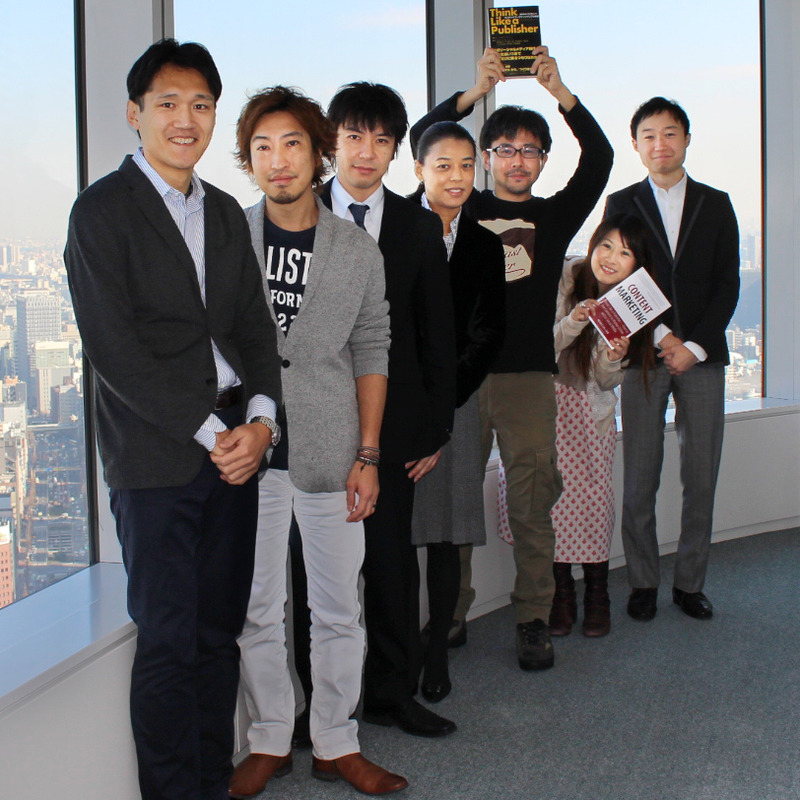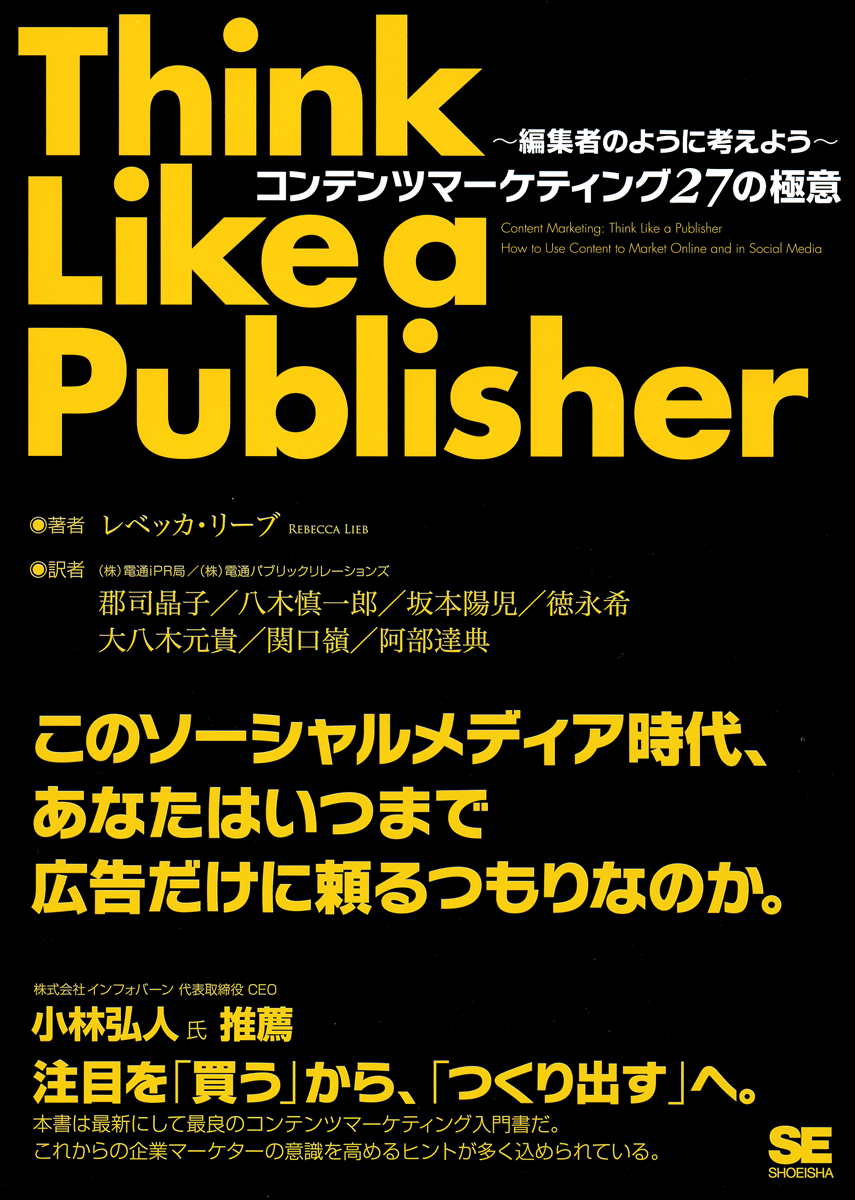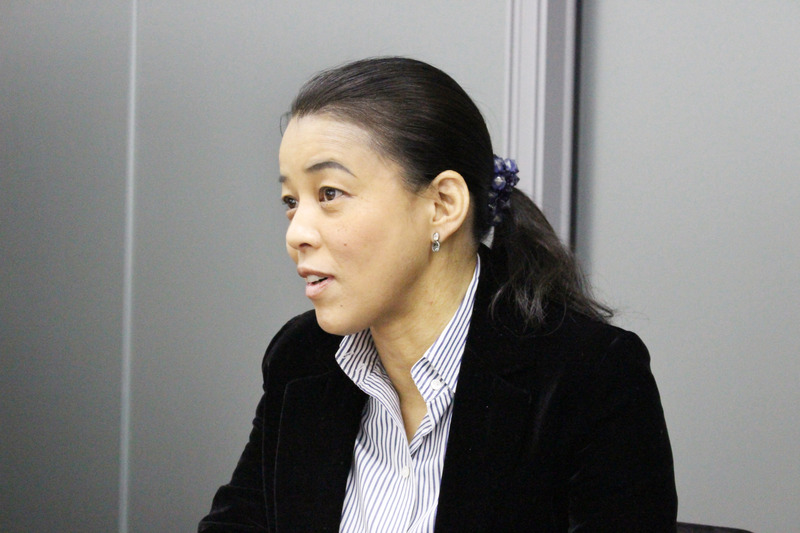On January 27th, the book "Think Like an Editor: 27 Secrets of Content Marketing " (by Rebecca Liev, published by Shoeisha) was released. The translation was handled by Akiko Gunji, Shinichiro Yagi, Yoji Sakamoto, Nozomi Tokunaga, Motoki Oohachi, and Mine Sekiguchi from Dentsu Inc. Public Relations, along with Tatsunori Abe from Dentsu Inc. Public Relations. "When trying to convey a company's message appropriately today, doesn't an 'editor's' perspective naturally become essential?" says Ms. Gunji, who led the translation team. We asked about what content marketing can achieve and its potential, already gaining traction in Japan.

From left: Mr. Ooyagi, Mr. Abe, Mr. Yagi, Mr. Gunji, Mr. Sakamoto, Mr. Tokunaga, Mr. Sekiguchi
Can't rely on ads alone anymore?!
──This book systematizes the meaning and techniques of "content marketing" using real-world examples. First, could you tell us the background behind translating this book?
Gunji: I believe many people involved in marketing communications today sense that the communication environment is undergoing significant change. The emergence of SNS platforms like Facebook and Twitter has amplified the power of information about companies and products spreading from person to person. Meanwhile, consumers now search for information when they want to know something. While relying solely on advertising, PR, and sales promotions used to suffice, that approach is no longer enough, forcing us to seek new methods. From the corporate perspective, leveraging SNS and integrating with company websites has made information dissemination far easier than before, creating new opportunities.
It was within this new communication environment that the iPR Bureau, where our translation team is based, was established in April 2012 to provide social media-related services. We began by exploring what constitutes excellent communication going forward. It was during this process that we encountered this book. Since there were still few related publications in Japan within the field of content marketing, we decided to translate and publish it. We are currently working on translating another book in this area.
──Lately, new terms like "○○ marketing" seem to appear daily. Is content marketing one of these new approaches?
Gunji: No. As this book states from the outset, "Content marketing is not new." Companies have always created content, and there have been cases where businesses proactively provided information consumers wanted.
It's easier to understand with examples. For instance, Burger King USA's web campaign "The Subservient Chicken" became a huge hit. Users could command a chicken character on the site to "dance" or "sing," and it would obey. As a result, sales of Burger King's chicken sandwiches skyrocketed.
Beyond such entertainment-focused content, practical offerings are also a form of content marketing. The GPS-based app "Sit Or Squat" provided by toilet paper brand Charmin tells users where the cleanest restroom is closest to their current location. Both are examples of content marketing featured in this book.
Content marketing is
providing the information people want, when they want it
──Chapter 27, written specifically for this edition, covers Japanese examples. Muji's online community, which has been running for over 10 years, is also an example of content marketing, right?
Gunji: Yes. Muji's community activities are utilized in product development. Chapter 27 also introduces the Tokyo Marathon runner community "ONE TOKYO." Here, various information sharing and interactions take place, allowing participants to enjoy the Tokyo Marathon not just on race day, but throughout the year.
──Even just from the examples mentioned, it seems the purposes and content are incredibly diverse.
Gunji: Exactly. When people hear "content marketing," they often think it's just about "creating entertaining content to go viral." But that's just one of many possible applications. Content marketing is a concept that can be utilized for various purposes, including IR, CRM, and crisis response.
Perhaps it's easier to understand if we define it as "the overall activity of disseminating valuable content for the audience and linking it to your company's business objectives."
While each serves as a chapter heading, content marketing can be used for advertising or PR purposes. Ultimately, however, as stated in the text, "content marketing is customer service."
──Customer service?
Gunji: Yes. It might not immediately click, but customer support interactions are always one-on-one, right? The mission is to address each individual's needs, provide the value they seek, and ensure their satisfaction. The word "content" itself carries the meaning of "be content with," implying satisfaction. In content marketing, the crucial point is precisely whether the person you're currently engaging with is satisfied.
In the past, corporate communication primarily involved one-way messaging from the company side—promoting the benefits of products or services to gain broad awareness. While such approaches remain necessary at times, they alone struggle to capture attention effectively today.
People are constantly connected to the internet and exposed to an overwhelming amount of information. To reach the audience you want to connect with, you need to understand them deeply and deliver what they desire through the appropriate channels. Setting aside the term "content marketing," I sense an increasing number of companies in Japan are exploring communication based on this very approach.
The next update is scheduled for February 27.





